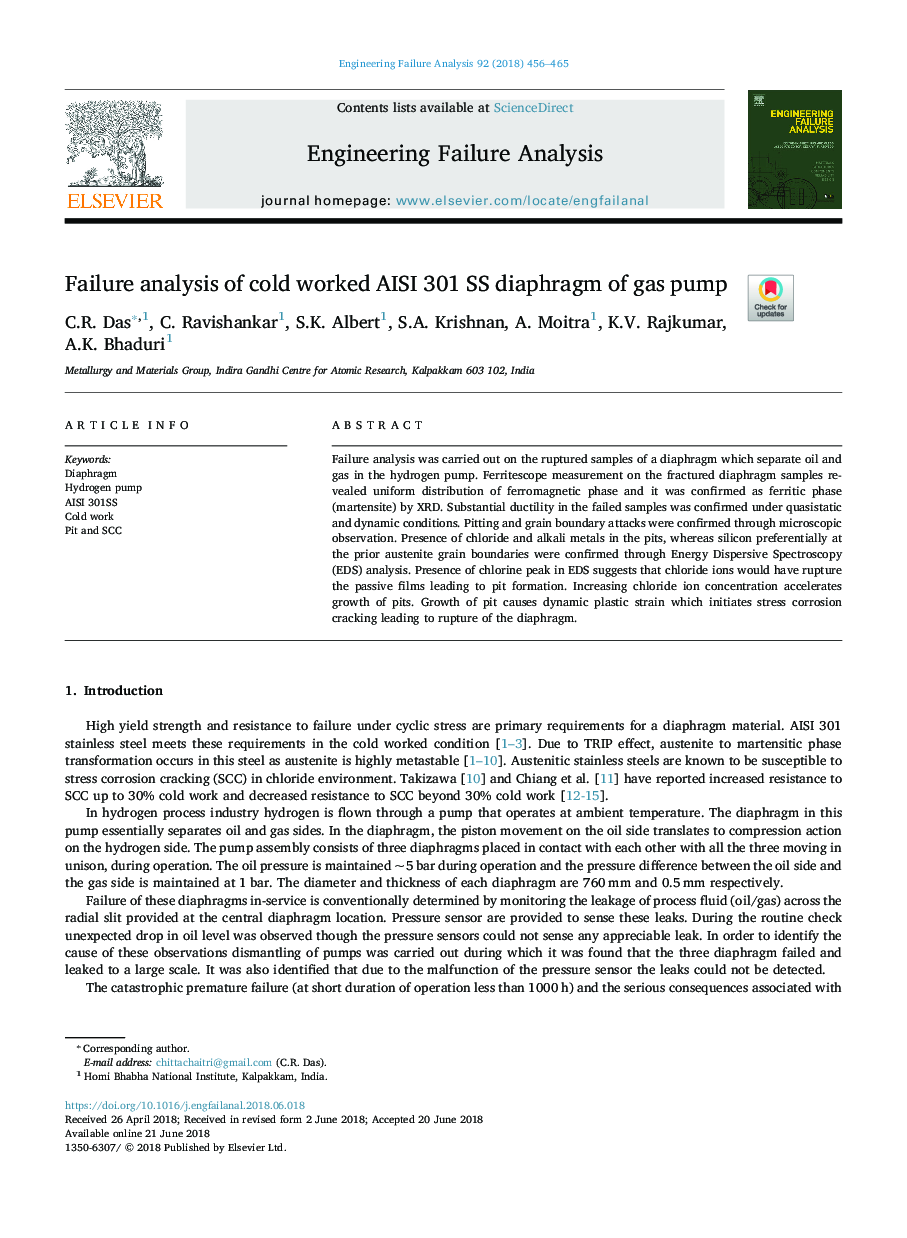| Article ID | Journal | Published Year | Pages | File Type |
|---|---|---|---|---|
| 7167146 | Engineering Failure Analysis | 2018 | 10 Pages |
Abstract
Failure analysis was carried out on the ruptured samples of a diaphragm which separate oil and gas in the hydrogen pump. Ferritescope measurement on the fractured diaphragm samples revealed uniform distribution of ferromagnetic phase and it was confirmed as ferritic phase (martensite) by XRD. Substantial ductility in the failed samples was confirmed under quasistatic and dynamic conditions. Pitting and grain boundary attacks were confirmed through microscopic observation. Presence of chloride and alkali metals in the pits, whereas silicon preferentially at the prior austenite grain boundaries were confirmed through Energy Dispersive Spectroscopy (EDS) analysis. Presence of chlorine peak in EDS suggests that chloride ions would have rupture the passive films leading to pit formation. Increasing chloride ion concentration accelerates growth of pits. Growth of pit causes dynamic plastic strain which initiates stress corrosion cracking leading to rupture of the diaphragm.
Keywords
Related Topics
Physical Sciences and Engineering
Engineering
Industrial and Manufacturing Engineering
Authors
C.R. Das, C. Ravishankar, S.K. Albert, S.A. Krishnan, A. Moitra, K.V. Rajkumar, A.K. Bhaduri,
